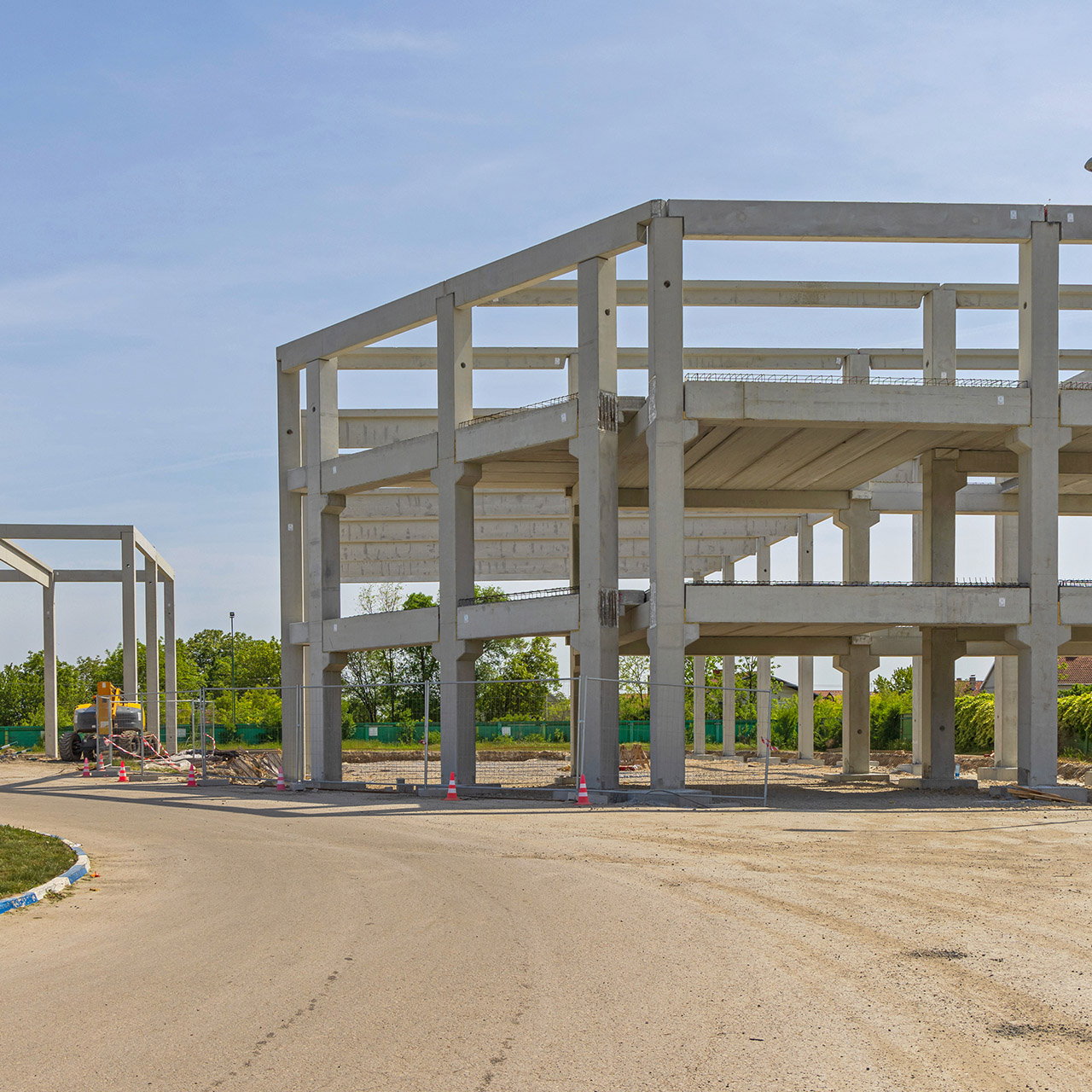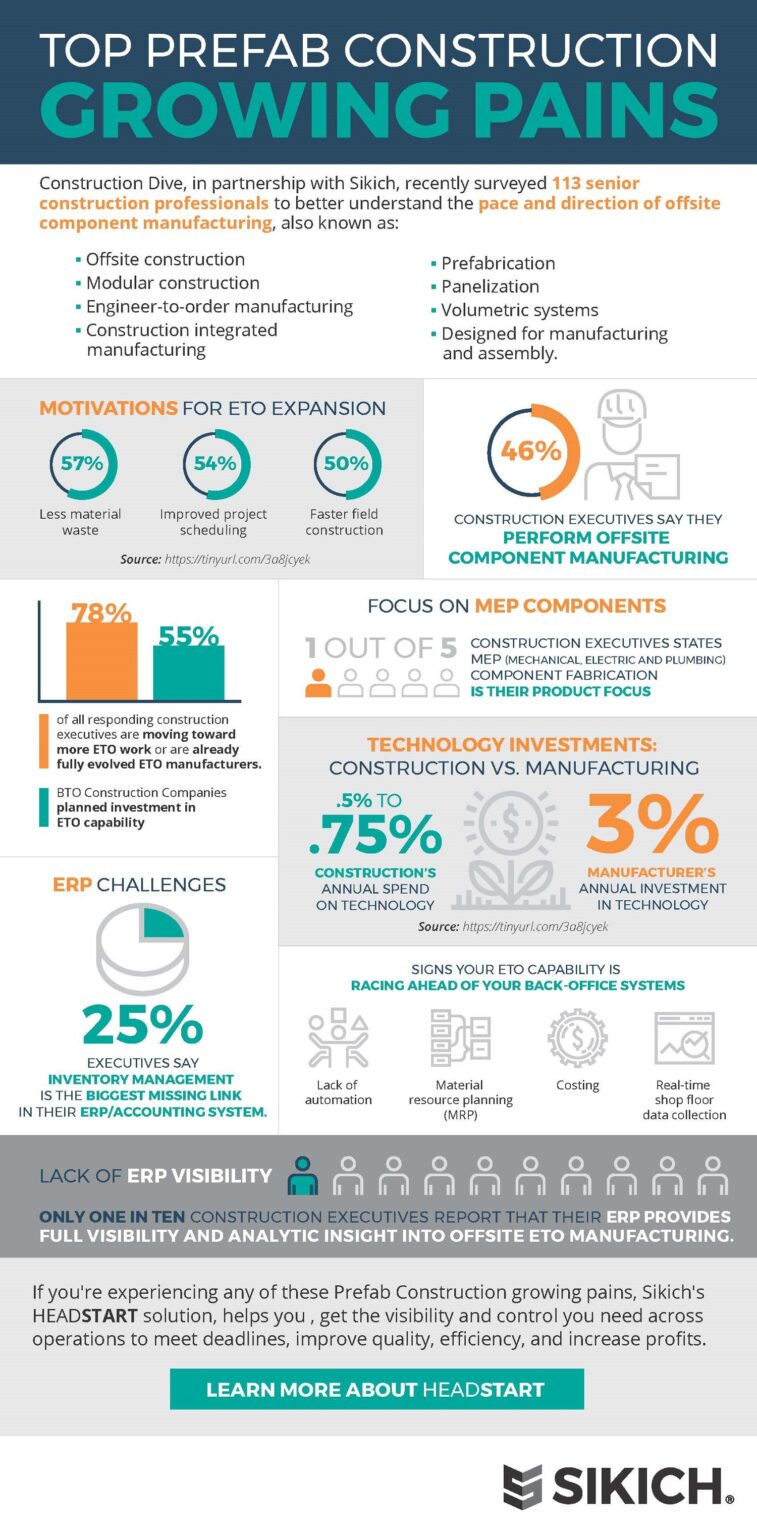This website uses cookies so that we can provide you with the best user experience possible. Cookie information is stored in your browser and performs functions such as recognising you when you return to our website and helping our team to understand which sections of the website you find most interesting and useful.
Infographic: Technology Challenges With Prefab Construction

It’s a building process that goes by many names, including offsite construction, modular construction, construction-integrated manufacturing, panelization, volumetric systems, designed for manufacturing, and, yes, prefabrication. They all boil down to a common meaning: the offsite manufacturing, fabrication or assembly of standardized building components for assembly or installation at a construction site.
There’s nothing new about the idea. Sears, Roebuck & Co. introduced the first comprehensive modular home kits in 1895, selling an estimated 500,000 prefab homes over the first couple of decades of the 20th century (prices started at $700). The Great Depression put an end to that Sears business.
Today, offsite component manufacturing claims a comparatively small but rapidly growing segment of the $1.36 trillion U.S. construction industry, generating over $130 billion in 2020. That number is expected to surge past $235 billion by 2030.
Few dispute that one way for the U.S. construction industry to achieve greater efficiency is a greater reliance on offsite component manufacturing. This report summarizes and analyzes the findings of a survey that reveals how construction company leaders see offsite construction manufacturing and their technology challenges.
So, where do things stand today with offsite construction and manufacturing?
Sikich, a leading professional services firm, and studioID teamed up to survey 113 senior construction professionals to better understand the pace and direction of offsite construction.
At a high level, the survey reaffirms the permanent position offsite component manufacturing now commands in the U.S. construction industry. The overall confidence level is high for offsite methods, though it does face headwinds. That turbulence comes from several directions, as the survey reveals. At its core, offsite component manufacturing is a study in disruption, as more and more project-centric companies work to integrate product-centric practices.
This integration of an engineer-to-order (ETO) business model with the industry’s traditional build-to-order (BTO) business model presents several challenging learning curves, such as: productization, materials, inventory management, and manufacturing technology.
In all, the survey uncovers six major findings. The findings underscore an industry in transition, wrestling with offsite construction technology challenges that, while difficult, are certainly manageable and surmountable, as manufacturing and other business segments have demonstrated.

This publication contains general information only and Sikich is not, by means of this publication, rendering accounting, business, financial, investment, legal, tax, or any other professional advice or services. This publication is not a substitute for such professional advice or services, nor should you use it as a basis for any decision, action or omission that may affect you or your business. Before making any decision, taking any action or omitting an action that may affect you or your business, you should consult a qualified professional advisor. In addition, this publication may contain certain content generated by an artificial intelligence (AI) language model. You acknowledge that Sikich shall not be responsible for any loss sustained by you or any person who relies on this publication.




